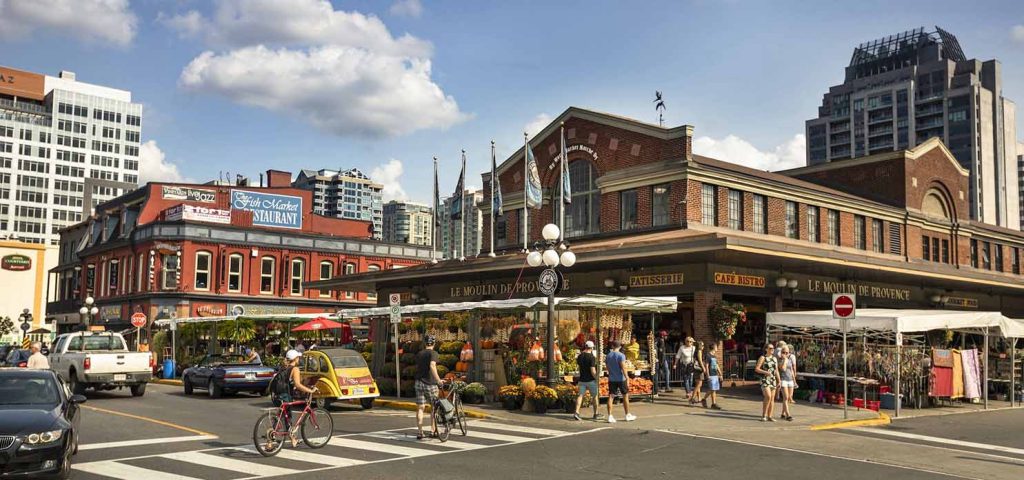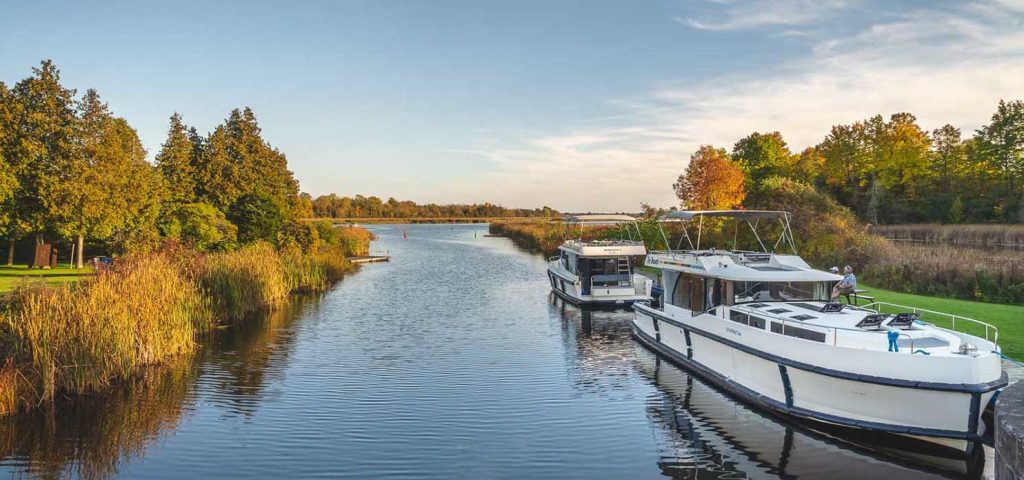Ottawa, the capital of Canada, is rich in history, culture, and natural beauty. As a first-time visitor, you might feel a bit unfamiliar with the city’s landmarks, transportation, and local customs. That’s why I’ve put together these 10 travel tips to help make your Ottawa trip smoother and more enjoyable. From getting around the city to must-visit attractions, these practical suggestions will help you experience the charm of this fascinating capital.
1. Learn About Ottawa’s Geography and Cultural Background
Ottawa isn’t just Canada’s political center—it’s a city steeped in history, multiculturalism, and natural beauty. As the fourth largest city in Canada and the capital since 1857, Ottawa sits at the border of Ontario and Quebec, making it a bilingual city where English and French coexist harmoniously. This rich linguistic and cultural blend is reflected in everything from local signage to public events. The city is home to iconic national symbols such as Parliament Hill, the Governor General’s residence (Rideau Hall), and numerous national museums and monuments. Learning about Ottawa’s role in Canadian Confederation, its Indigenous roots, and its European colonial past can offer valuable context, enhancing your appreciation of what you see and experience during your visit.
2. Dress Appropriately for the Weather
Ottawa experiences a full spectrum of seasons, each bringing its own beauty and challenges. Winter in Ottawa is picturesque yet harsh, often accompanied by wind chills and snowstorms. To stay comfortable, layer your clothing—start with thermal underwear, add insulating layers like fleece, and finish with a waterproof, wind-resistant coat. Snow boots with good traction are essential for icy sidewalks. In contrast, Ottawa summers are ideal for enjoying parks, festivals, and patios. Still, be prepared for occasional heatwaves and cool evenings—pack breathable clothing for the day and a light jacket or cardigan for night walks along the Rideau Canal or ByWard Market. Also, if visiting during spring or fall, expect sudden changes in temperature and bring a compact umbrella for unpredictable showers.
3. Don’t Miss Parliament Hill
Parliament Hill, perched majestically above the Ottawa River, isn’t just a government building—it’s the heart of Canadian democracy and a powerful national symbol. Its neo-Gothic architecture is breathtaking, especially during sunrise or when lit up at night. Free guided tours offer access to the House of Commons, the Senate, and even the historic Library of Parliament. In summer, you can also witness the “Changing of the Guard” ceremony—a colorful military pageant that draws large crowds. During the evening, the “Northern Lights” multimedia show transforms the Parliament buildings into a canvas of storytelling through light and music. If you’re in Ottawa on Canada Day, prepare for a grand celebration with live music, fireworks, and patriotic pride—the Hill is the epicenter of national festivities.

4. Take Advantage of Ottawa’s Public Transit
Getting around Ottawa is easy and budget-friendly thanks to OC Transpo, which operates an extensive network of buses and a light rail system called the O-Train. Stations are well-marked, and schedules can be accessed through mobile apps or the OC Transpo website. If you’re staying more than a day or two, a Presto card offers the convenience of cashless payment and fare discounts. For tourists, the day pass provides unlimited rides and can be especially handy during event days or when hopping between museums. Ottawa is also investing in electric buses and environmentally friendly transit solutions, reflecting its commitment to sustainability.
5. Rent a Bike to Explore the City’s Scenic Routes
Ottawa is consistently ranked among Canada’s most bike-friendly cities, and with over 800 kilometers of multi-use pathways, it’s easy to see why. The Capital Pathway Network connects major landmarks, parks, and neighborhoods in a safe and scenic manner. Bike rentals are available throughout the city, including near downtown, ByWard Market, and the Canadian Museum of History. A leisurely ride along the Rideau Canal, a UNESCO World Heritage Site, is especially beautiful in late spring when tulips bloom or in fall when maple leaves turn vivid red and gold. Adventurous cyclists can head to the Greenbelt, a massive ring of protected green space ideal for birdwatching and forest trails. For those who enjoy a full-day trip, consider biking toward Gatineau Park, just across the river in Quebec—its hills, lakes, and lookouts offer some of the most rewarding views in the region.
6. Plan Your Accommodation in Advance
Ottawa offers a wide range of accommodations to suit every travel style and budget, from elegant five-star hotels and boutique inns to affordable hostels and cozy bed-and-breakfasts. If you value easy access to major attractions like Parliament Hill, the ByWard Market, and the National Gallery, staying in downtown Ottawa is the best choice—it places you within walking distance of the city’s cultural core. For those seeking a quieter or more economical option, neighborhoods like Glebe, Westboro, or even across the river in Gatineau offer charming and budget-friendly alternatives. Summer is Ottawa’s high tourist season, especially in July and August when festivals peak and university students are away. Rooms fill up quickly, so booking well in advance—ideally two to three months ahead—is highly recommended to avoid limited availability and inflated prices.
7. Visit Ottawa’s Museums and Art Galleries
Ottawa is more than just Canada’s administrative center—it’s a cultural mosaic rich in history, art, and innovation. From the majestic halls of the Canadian Museum of History, which traces the country’s origins and Indigenous heritage, to the interactive exhibits of the Canadian Museum of Nature, there’s something to fascinate every type of traveler. Art lovers will appreciate the Ottawa Art Gallery and the National Gallery of Canada, home to an impressive collection of Canadian and international masterpieces, including works by the Group of Seven. Many institutions offer free entry on specific evenings or days—like Thursday nights at the National Gallery—or host unique exhibitions and family-friendly programs on weekends. To make the most of your visit, consider planning your itinerary around these events, and allow plenty of time to explore each venue at a relaxed pace.
8. Explore Ottawa’s Unique Food Scene
Ottawa’s food scene is a flavorful blend of classic Canadian ingredients and global culinary influences, reflecting the city’s multicultural population and proximity to farm-rich regions. You can start your day with a hearty brunch featuring local eggs and maple bacon, then sample French-inspired delicacies like foie gras or tourtière for dinner. Don’t forget to try sweet maple taffy or a glass of Ontario’s renowned ice wine. Seafood lovers will enjoy fresh offerings from both coasts, and carnivores should not miss slow-braised Ontario beef or elk. ByWard Market is a must-visit foodie destination—it’s one of Canada’s oldest public markets and buzzes with energy year-round. Here you’ll find artisan cheese shops, handmade chocolates, gourmet food trucks, and cozy patios perfect for people-watching.

9. Discover Nature Outside the City
While Ottawa boasts beautiful urban parks and riverside trails, the surrounding region is a true haven for nature lovers seeking a break from city life. A short drive away, Algonquin Provincial Park offers a wilderness experience that feels worlds apart. Its vast network of trails leads you through dense forests, tranquil lakes, and scenic lookouts, perfect for spotting moose, loons, and even black bears in their natural habitats. Whether you prefer a relaxed picnic by the water, a challenging backcountry hike, or a multi-day canoe adventure, the park has options for all fitness levels and interests. Closer to the city, Gatineau Park features more than 165 kilometers of trails for hiking, cycling, and cross-country skiing. In fall, it becomes one of the region’s best places to see vibrant foliage, and in winter, the trails transform into a snowy wonderland ideal for snowshoeing. These natural escapes are easily accessible by car or organized tours, making them excellent day-trip destinations.
10. Get Involved in Local Festivals and Events
Ottawa’s cultural calendar is brimming with festivals and public events that showcase the city’s creative spirit and community pride. One of the highlights is Winterlude, held every February, where downtown streets and parks become a frosty playground filled with ice sculptures, snow mazes, and skating along the iconic Rideau Canal. For music fans, Bluesfest in July draws international performers and thousands of attendees. Canada Day on July 1st is particularly spectacular—imagine fireworks bursting over Parliament Hill and a sea of red-and-white clad revelers celebrating in unison. Foodies will enjoy the fall harvest festivals like Taste of the Harvest or the Ottawa Wine and Food Festival, offering a chance to sample regional specialties and local wines. From outdoor concerts to cultural parades and seasonal markets, Ottawa’s festivals provide unforgettable experiences and a deeper connection to the city’s vibrant local life. Be sure to check the city’s event calendar before your trip to align your visit with something special.
With these travel tips, you should now have a better understanding of what to expect in Ottawa. From natural beauty and historic landmarks to vibrant cultural events, this capital city is full of experiences waiting to be discovered. By preparing ahead and following these suggestions, your first trip to Ottawa will surely be a memorable one.
